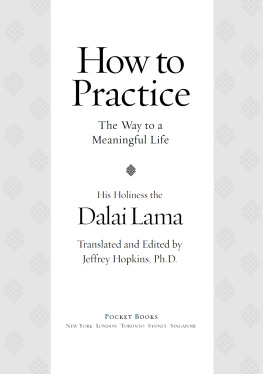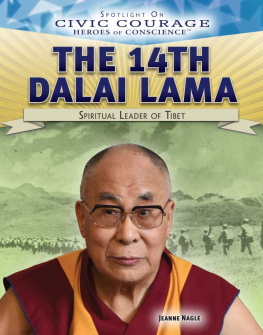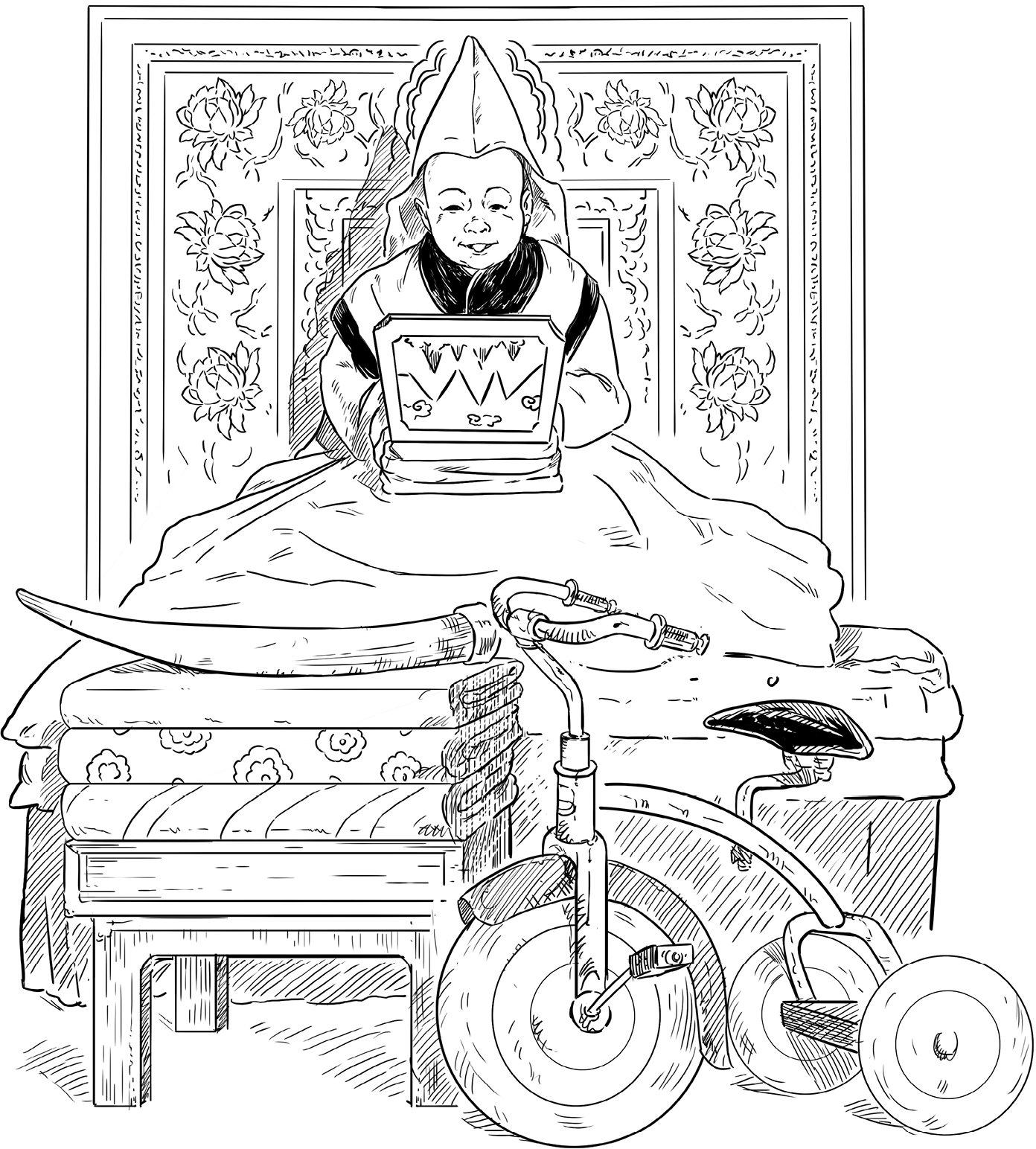For all who spread peace, compassion, humor, and happinessDMR
Dedicated to my momDP
PENGUIN WORKSHOP
Penguin Young Readers Group
An Imprint of Penguin Random House LLC

If you purchased this book without a cover, you should be aware that this book is stolen property. It was reported as unsold and destroyed to the publisher, and neither the author nor the publisher has received any payment for this stripped book.
Penguin supports copyright. Copyright fuels creativity, encourages diverse voices, promotes free speech, and creates a vibrant culture. Thank you for buying an authorized edition of this book and for complying with copyright laws by not reproducing, scanning, or distributing any part of it in any form without permission. You are supporting writers and allowing Penguin to continue to publish books for every reader.
The publisher does not have any control over and does not assume any responsibility for author or third-party websites or their content.
Text copyright 2018 by Dana Meachen Rau. Illustrations copyright 2018 by Penguin Random House LLC. All rights reserved. Published by Penguin Workshop, an imprint of Penguin Random House LLC, 345 Hudson Street, New York, New York 10014. PENGUIN and PENGUIN WORKSHOP are trademarks of Penguin Books Ltd. WHO HQ & Design is a registered trademark of Penguin Random House LLC.
Library of Congress Cataloging-in-Publication Data is available.
ISBN 9781101995549 (paperback)
ISBN 9781524786137 (library binding)
ISBN 9781101995556 (ebook)
Version_2
Contents
.jpg)
Who Is the Dalai Lama?
February 22, 1940, was a busy day at the Potala, a grand, thousand-room palace high in the mountains of Tibet. Early in the morning, guests started to fill the main assembly hall. They were waiting for their leader to arrive.
Once the hall was full, the crowd grew quiet. A little boy, dressed in golden robes, entered. Horn and trumpet blasts greeted him. He crossed the room on a white carpet that had been rolled out especially for him to a jeweled throne. It was called the Lion Throne because of the eight lions carved into the wooden base of the tall, cushioned chair. The throne was the seat of the Dalai Lama (say: DAHL-eye LAH-muh), a name given to the political and religious leader of the country of Tibet.
The young Dalai Lama needed some help climbing up the steps to his throne. He sat cross-legged on the seat and watched the ceremonies, dances, and readings. Many gifts were set out for the boya music box, the tusk of an elephant, expensive fabrics, parakeets, a tricycle, and even a brick of gold! Holy men, government officials, and the others in attendance, in a sign of respect, bowed so low before him that they were lying on the floor. I found that funny, he later said. The Dalai Lama is known for his sense of humor. But it was especially funny to him that the adults were acting this way. After all, he was only four years old!
As he grew, that young boy on the Lion Throne began to understand why that day was so special. As Tibets Fourteenth Dalai Lama, he would face joyful times and difficult times. He would grow in wisdom. And he would become caring and strong.
But on his enthronement day, he had no idea what lay ahead for himself and for the people of Tibet. Along with the many gifts the little boy received, he also held an adventurous future in his hands.
CHAPTER 1
Little Lhamo
Diki Tsering woke very early on July 6, 1935. She went out behind her mud-and-stone house in Taktser, Tibet, to the barn. There, among the animals, she gave birth to her son Lhamo (say: LAM-oh). He didnt cry. His eyes were open wide. Lhamos mother, Diki, and father, Choekyong Tsering, already had four childrentheir daughter, Dolma, and three sons named Norbu, Gyalo, and Lobsang. There wasnt much furniture in their six-room house. The children didnt have their own beds. The family mostly gathered in the kitchen, especially during cold Tibetan winters, to keep warm by the fire. They practiced Tibetan Buddhism, a religion that was very important to them and to all Tibetans. So their house also had a prayer room, where the family left offerings of food and flowers at a small altar.

Taktser, a small village in the northeastern province of Amdo, was on a hill with a view of a wide valley. The land and the weather werent good for farming, but families, including Lhamos, still tried their best to grow crops. His family grew barley, buckwheat, and potatoes. Before Lhamo was born, the village suffered from a long drought. No rain had fallen in years, and hail had destroyed the plants in the fields. Many villagers were starving.

Buddhism
Buddhism is a religion founded by Siddhartha Gautama. This prince lived sometime between the sixth and fourth centuries BC in northern India. He was known as Buddha.
Buddha gave up a royal life to search for enlightenment, or Nirvana. Enlightenment is complete happiness and goodness and an end to suffering. Buddha taught others how to find this peace within themselves. After Buddha died, his followers continued to practice his lessons. Buddhism became a major religion that spread into Tibet in the seventh century AD.
In Tibetan Buddhism, lamas are important teachers who guide people toward enlightenment. There are between ten and twenty million Tibetan Buddhists in the world today.
Once Lhamo could walk, he followed his mother around the farm as she did her chores. He held the bowl as she milked the dzomos (say: ZHO-mohs)animals that are a cross between yaks and cows. Little Lhamo was playful. When his mother carried him on her shoulders, he pulled at her ears to show her which way to go. When she sent him to gather eggs from the chickens, she discovered him clucking and sitting with the hens in their nests.
The Tsering family farm also had yaks, sheep, goats, and horses. Lhamos father especially loved the horses. But he was often angry and harsh with his children. Lhamos mother, on the other hand, was gentle and kind. Lhamo later said, My first teacher of compassion was my mother.














.jpg)





